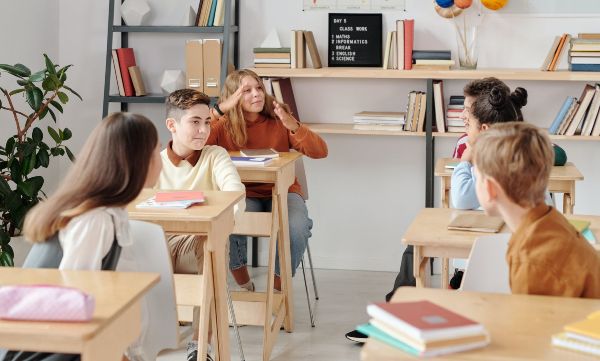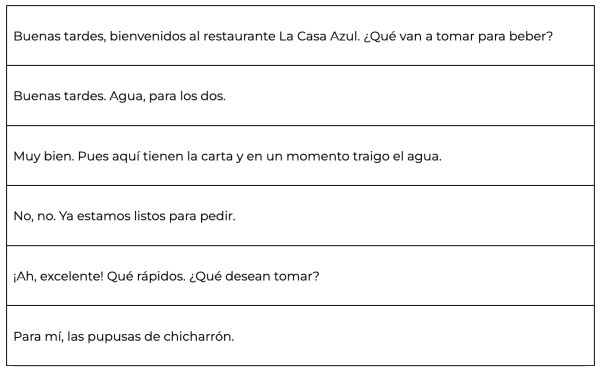Objective: provide models for conversations and have students work autonomously
Required materials: a written conversation divided in sentences (see an example)
Preparation: minimal (although cutting the paper strips might take a while)
Time: at least 10 minutes
Number of students: 8 or more
Directions:
I love this activity because every single student in the class has to speak in Spanish, but we can give easier tasks to struggling students. I also like that they have to work together in order to complete the activity, with little help from the teacher.
First of all, we need to prepare a conversation and divided it in sentences. In this example (Google Doc - PDF) we want students to practice a restaurant conversation. There are 12 sentences, so I'll organize my class in groups of 12 students.
If I had 20 kids in my class, I'd have 2 groups of 10, and two students in each group (the ones with greater proficiency) would get two sentences instead of one. The goal is that every kid has at least one sentence to work with.

We need to print out one copy of the conversation for each group, and cut the sentences so every student gets at least one. Keep those papers together with a paper clip or put them in an envelope.
Now we're ready to explain the directions to the class: let them know each student will get at least one piece of paper with a sentence that they need to memorize. Then, they'll hide the papers and try to put the conversation in order just by talking to the people in their group. Whenever they think they're ready, they can call the teacher and say their sentences in turns to see if it's right.

The activity will be more successful if we introduce the topic and vocabulary first. Before doing this restaurante conversation, for example, I used this free warm-up activity (which includes the vocabulary about dough) and the lesson Mesa para dos.
It also helps explain expression and vocabulary that students can use to discuss the order of their sentences such as "yo creo que yo voy primero / después de..." or "yo soy el último".
Students that forget their sentences can look at their paper, but we should encourage not to share the papers and speak only in Spanish through the whole activity.

Follow-up activities:
Once students find out the right order, you can display the solution (Page 2) on the board. They can use this conversation as a model to make their own (in groups of threes: one waiter and two customers), using menus they've previously created.
You can also ask students to add a new step to the conversation, such as a problem (Lo siento, pero no tenemos yuca frita) or how to bring the food or ask for the check at the end of the meal.
